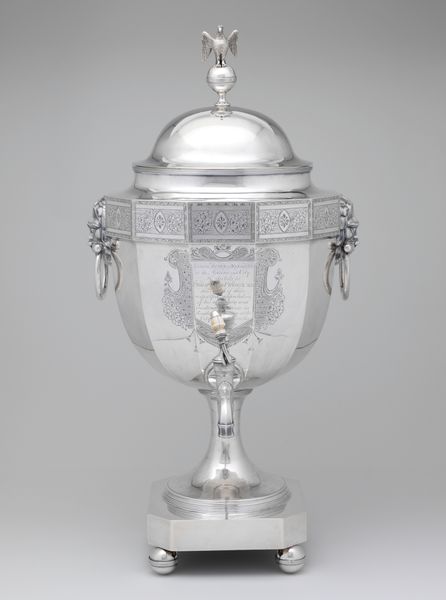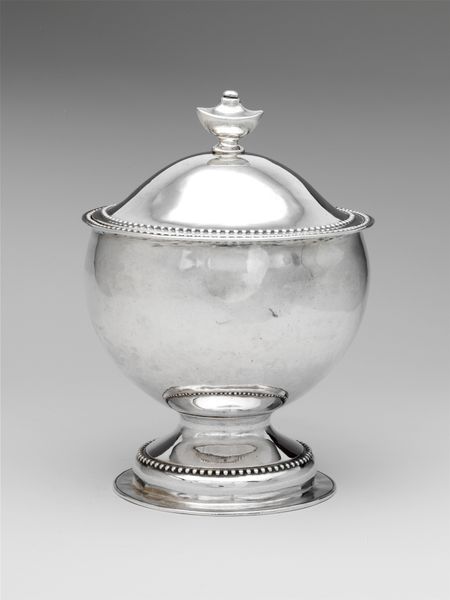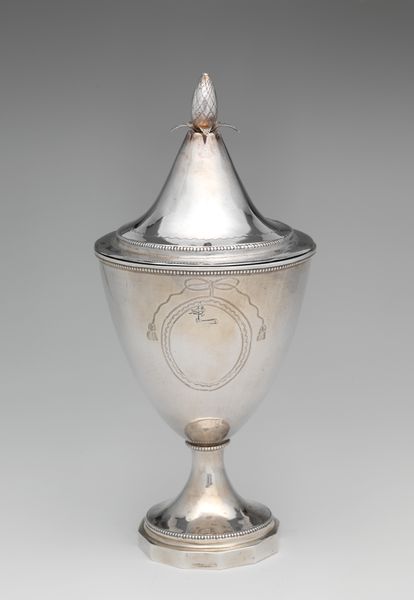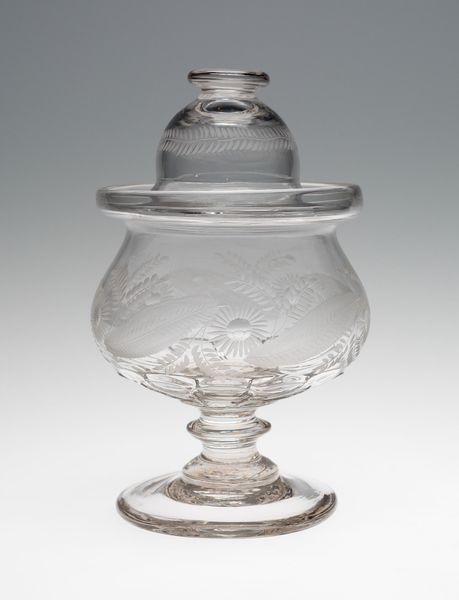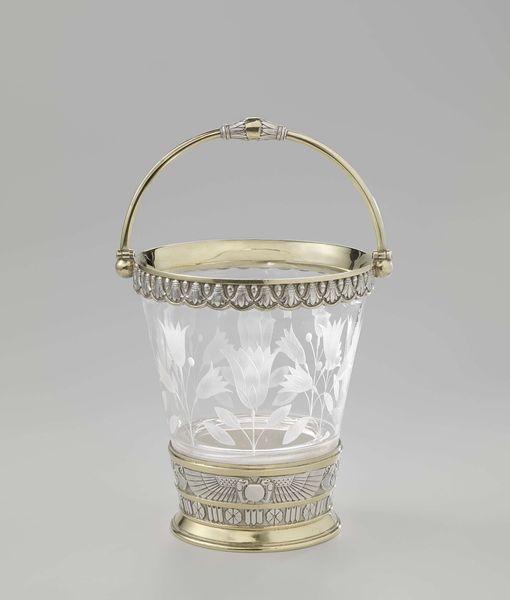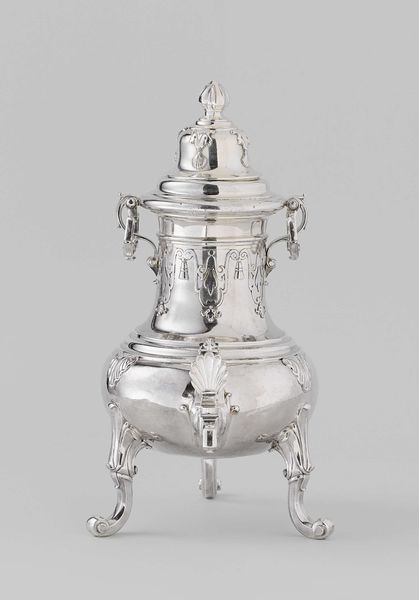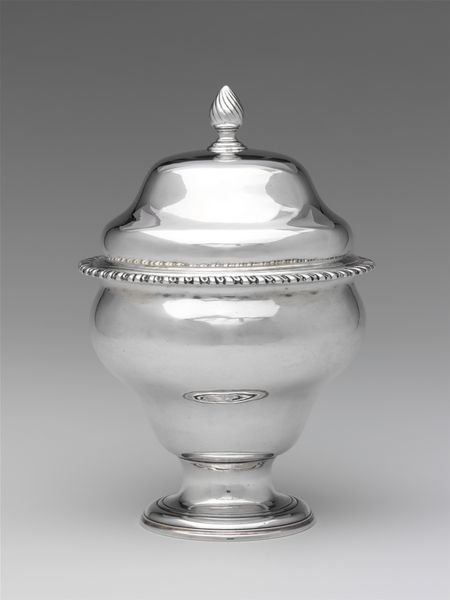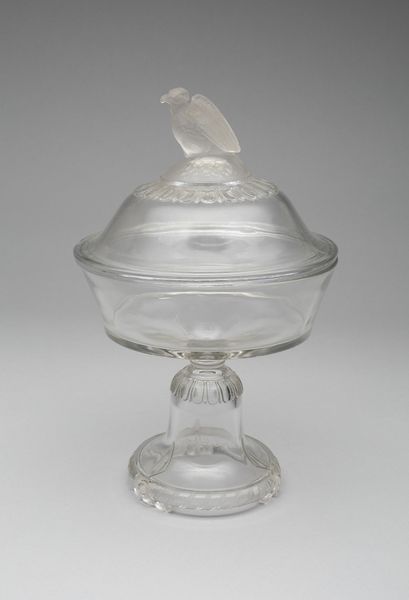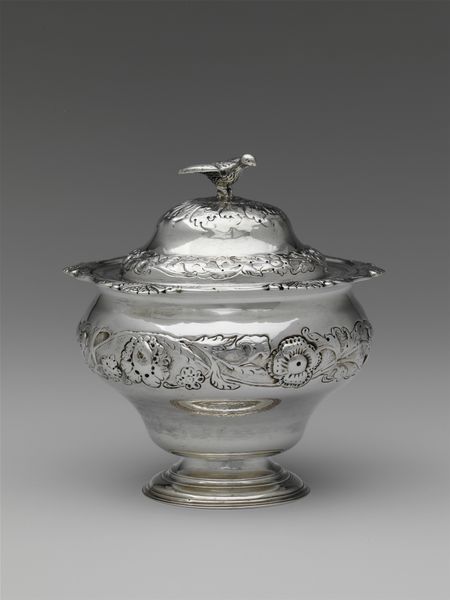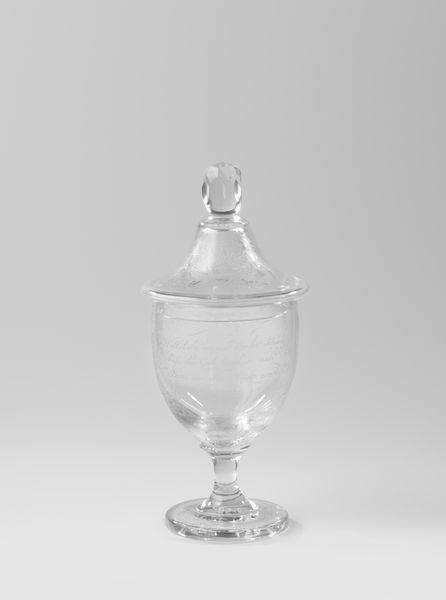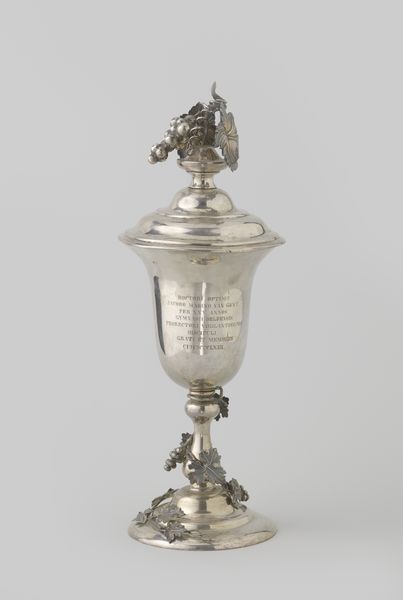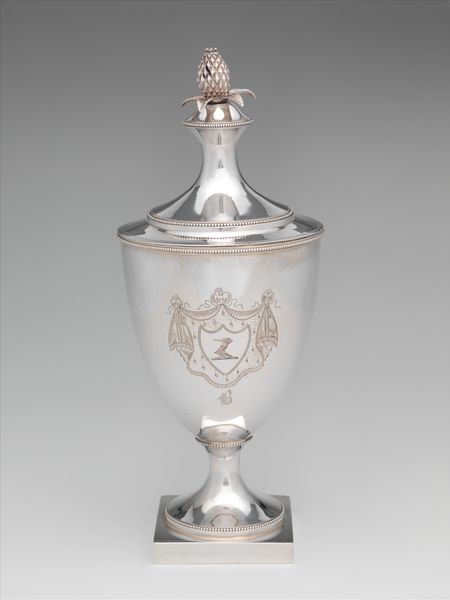
silver, metal
#
silver
#
metal
#
decorative-art
Dimensions: 21.6 × 8.6 cm (8 1/2 × 3 3/8 in.)
Copyright: Public Domain
Editor: Here we have a silver "Sugar Bowl," crafted between 1790 and 1794. It’s a beautiful piece; the pineapple on the lid is just so charming. What can you tell me about it? Curator: Notice first how the very existence of a specialized object for sugar tells us about trade routes, colonial exploitation, and emerging consumer culture. The artistry, that hammered and shaped silver, required skilled labor. Consider the material cost—who could afford this luxury? Editor: That's a good point. I was just appreciating its shininess and form. Curator: Precisely. This shininess signifies not just wealth, but a complex global network fueled by the sugar plantations. Each detail, each curve, reflects a system of extraction. What is the significance of pineapple as the figure? Editor: Hmm, I'm not sure... a decorative flourish? Curator: Or a symbol? The pineapple became a symbol of welcome and hospitality; an imported luxury fruit to crown this repository of imported sweetness speaks volumes. What labor do we not see in this object? Editor: Okay, I am following you now! The silver itself would have had to be mined and processed, and you already mentioned the labour to produce the piece, all this material that implies power and status, I suppose. It's certainly not just a shiny bowl! Curator: Exactly. It’s about recognizing how materials become markers of social and economic relations, often obscuring the exploitation inherent in their production and consumption. Editor: Thanks, that gives me a totally different way to think about this seemingly simple object. It's amazing how much is hidden just beneath the surface.
Comments
No comments
Be the first to comment and join the conversation on the ultimate creative platform.
